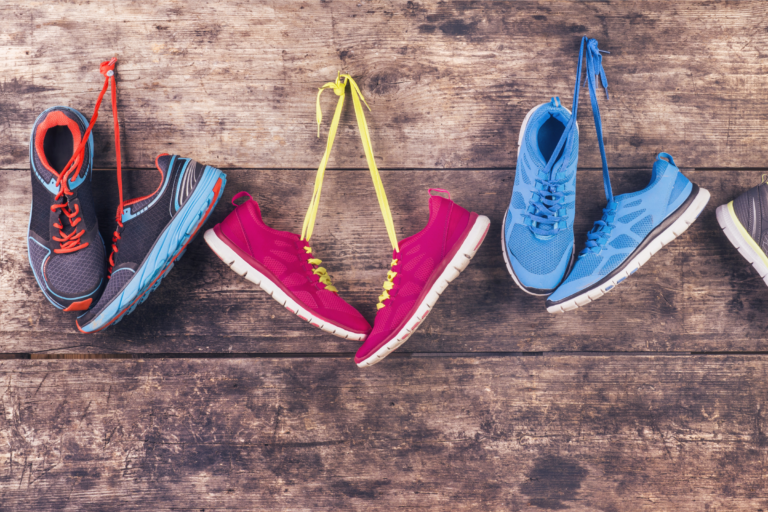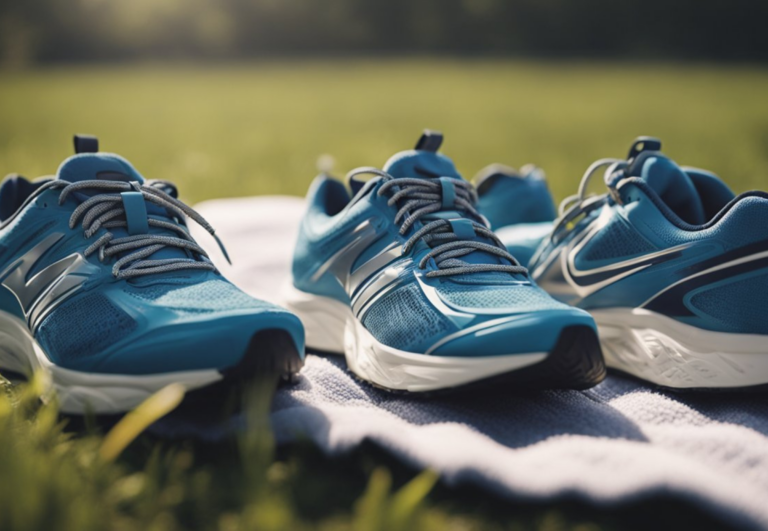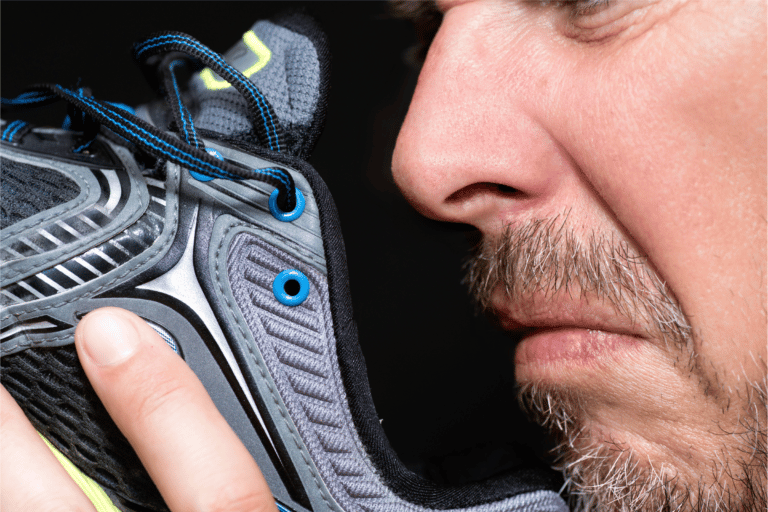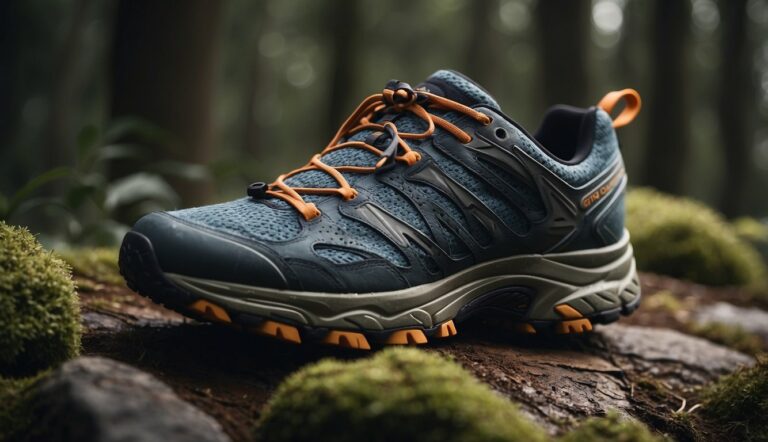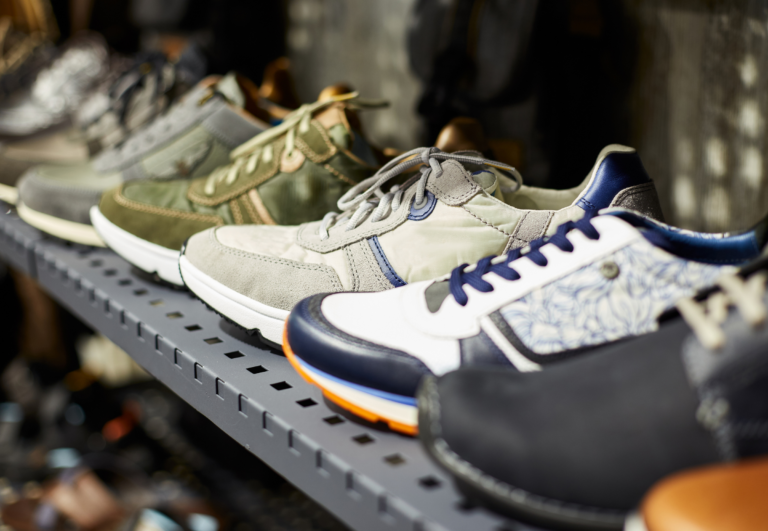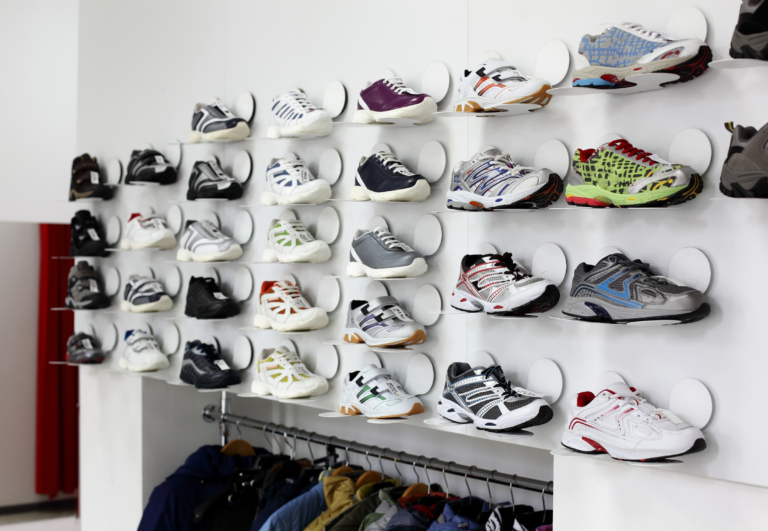13 Common Reasons Why Running Shoes Rub the Side of Your Ankle (With Fixes!)
Struggling with running shoes that rub the side of your ankle can be a real pain—literally. It’s an issue that plagues many runners, and it’s not always as simple as wearing the wrong shoe size.
From a poor fit that doesn’t accommodate your foot’s unique shape to heel slippage, a necessary breaking-in period for new shoes, specific shoe design features, foot shape variations, excessive supination or pronation during your run, wearing out of your favorite pair of shoes, using socks that are old or don’t fit right, incorrect lacing techniques that don’t support your feet, unique ankle mobility or gait patterns, uneven wear on one side of the heel, unnoticed manufacturing defects, to even the effects of temperature and swelling on your feet—each of these can contribute to why your running shoes are rubbing the side of your ankle.
Understanding these common challenges is the first step in finding a solution that works for you, ensuring your runs are as comfortable as they are effective.
13 Reasons Why Running Shoes Rub the Side of Your Ankle
Your running shoes might be giving you grief for several reasons, and it’s not just about the shoe size.
Here’s a personalized guide to help you figure out why those pesky ankle rubs occur and how to stop them.
- Poor fit
- Heel slippage
- Breaking-in period
- Shoe design
- Foot shape
- Excessive supination or pronation
- Worn-out shoes
- Wrong or old socks
- Wrong lacing technique
- Ankle mobility or gait
- Excessive wear on one side of the heel
- Manufacturing defects
- Temperature and swelling
Remember, these are common challenges many runners face, and the solutions could be simpler than you think. Keep your running experience pain-free and enjoyable by paying attention to these details!
Poor Fit
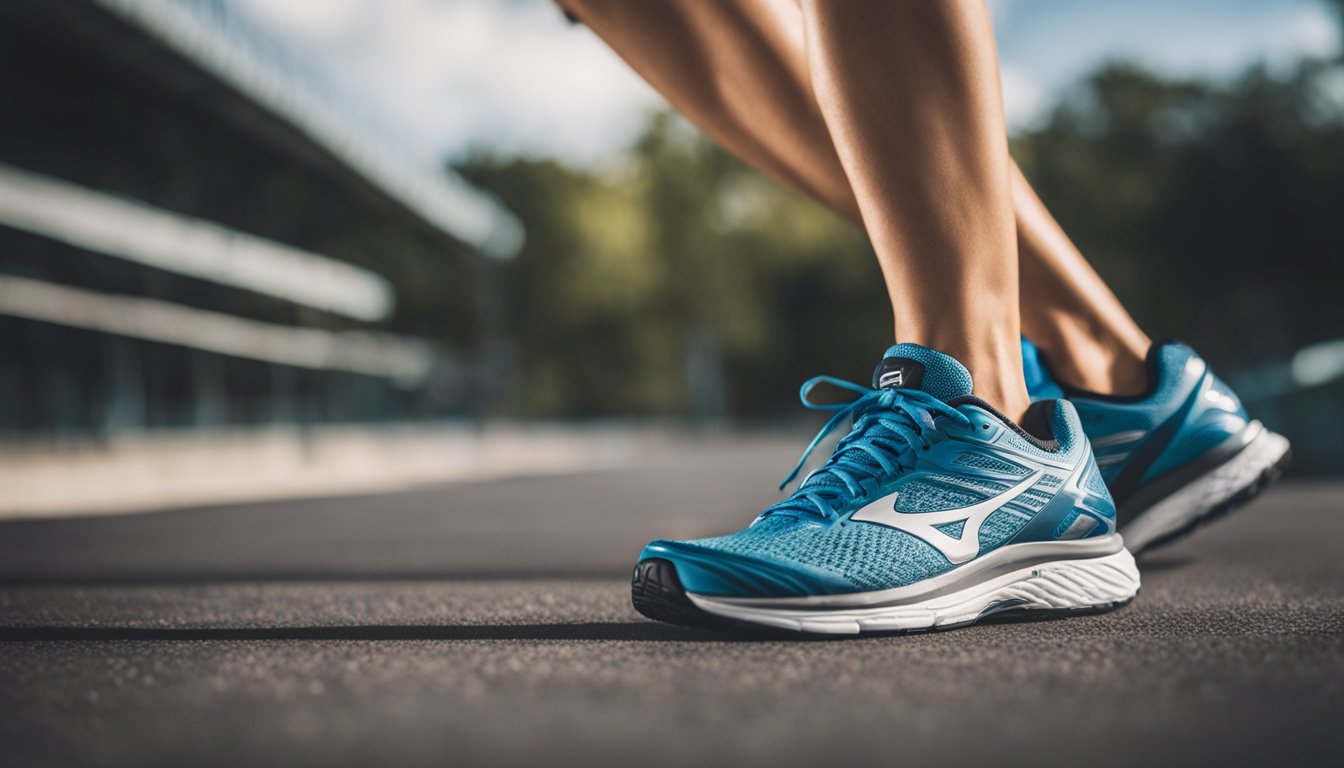
When your running shoes don’t fit well, they can cause discomfort and even lead to common foot problems. A shoe that’s too tight may press against your ankles, leading to friction that can cause blisters or aggravate corns and calluses. On the flip side, shoes that are too loose allow your foot to slide and rub against the interior, which can also result in skin irritation or blisters.
To ensure a good fit, you should look for shoes that match the width and volume of your feet. It’s important to have enough room for your toenails to avoid pressure, but not so much that your foot moves inside the shoe. Moisture from sweat can worsen the rubbing, as damp skin is more susceptible to damage.
| Tips to Reduce Shoe Rubbing | Description |
|---|---|
| Proper Sizing | Get measured professionally for the right shoe size. |
| Right Width | Choose a shoe that accommodates the width of your foot. |
| Lacing Techniques | Use lacing strategies to secure your foot and reduce movement. |
| Moisture Management | Keep feet dry with breathable materials or moisture-wicking socks. |
If you experience pain from rubbing, consider using over-the-counter remedies like talcum powder to reduce moisture or Leukotape to protect sensitive areas. Remember, the right fit is key to a comfortable and enjoyable run.
Heel Slippage Due to a Loose Heel Counter
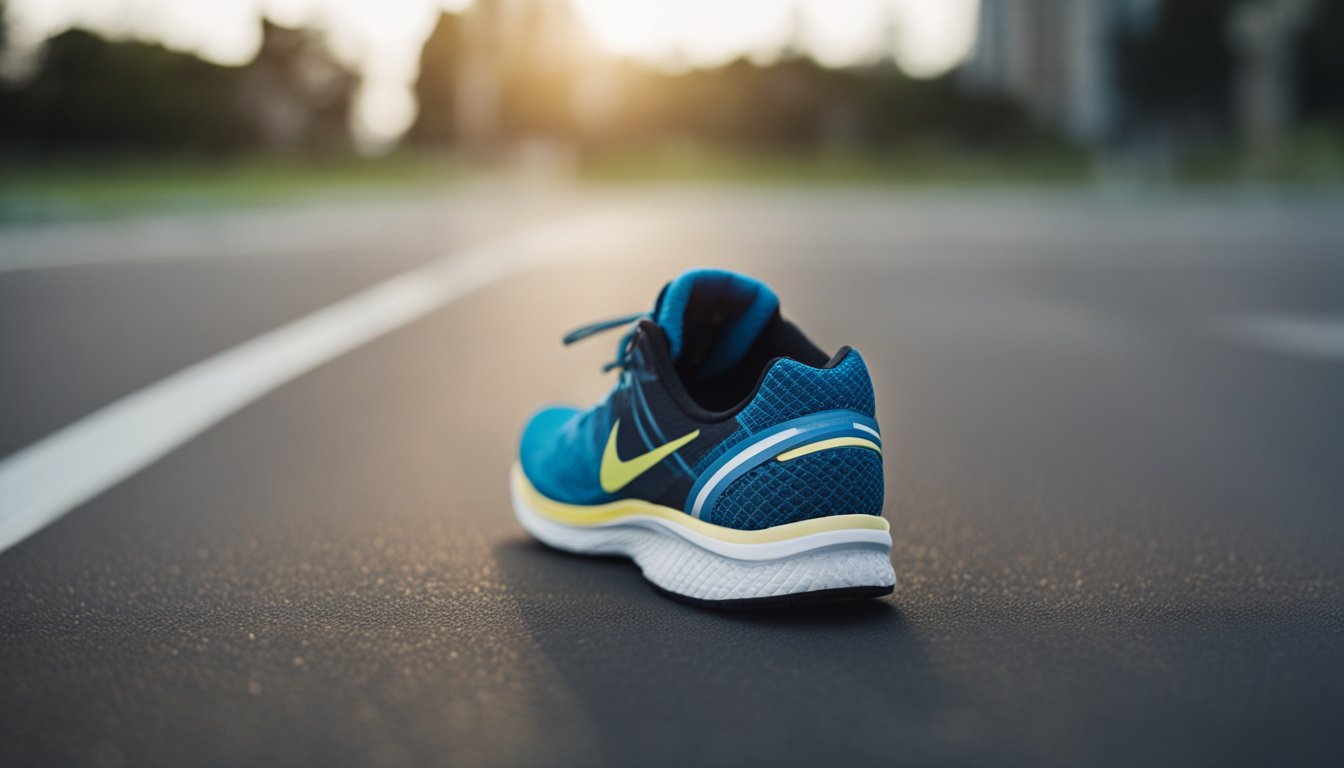
When your running shoes rub the side of your ankle, it’s often due to heel slippage caused by a loose heel counter. This is the structured piece that cradles the heel and aids in stability.
If it’s not snug, your heel can move more than it should, leading to uncomfortable friction and potential skin irritation.
Common Issues:
- Pain: Your ankles may experience discomfort as they try to compensate for the instability.
- Blisters: Due to the excessive movement, blisters might form from the repetitive rubbing.
- Moisture Buildup: Sweaty feet can make slipping worse while also softening the skin, making it more vulnerable to blisters and other common foot problems.
To mitigate these issues, ensure a good fit by checking that the heel counter isn’t too loose. Consider moisture-wicking socks or light talcum powder to reduce sweat and moisture. If problems persist, some runners use a strip of Leukotape for a temporary hold, but this is a short-term fix and should not replace proper shoe fitting.
Tips to Avoid Heel Slippage:
- Ensure proper shoe size and fit.
- Lace your shoes snugly, especially at the top closest to the ankles.
- Choose socks that manage sweat effectively.
Remember, your toenails, corns, and calluses can also contribute to discomfort, so keep your toenails trimmed and address any additional foot issues that could exacerbate the slippage and rubbing.
Breaking-in Period
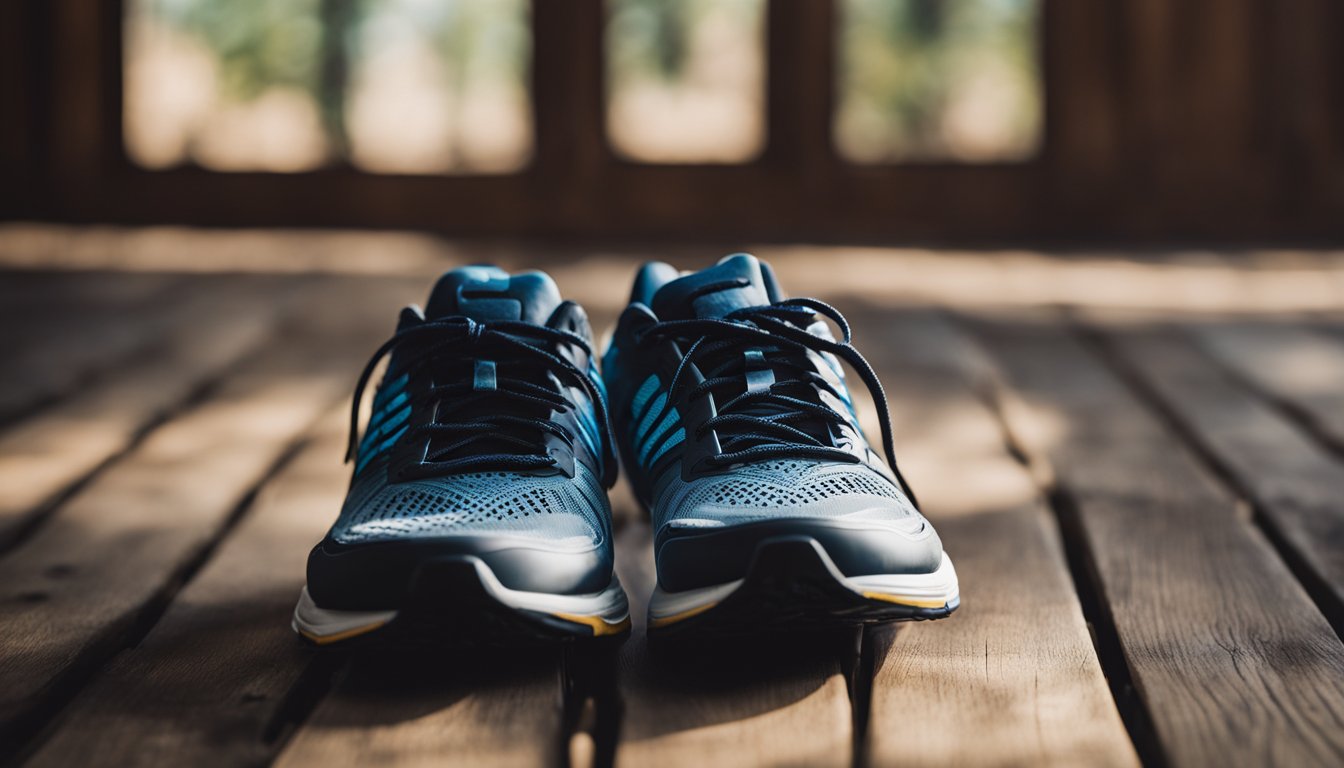
When you get new running shoes, your ankles may experience irritation as your shoes have not yet molded to your feet’s unique contours. The breaking-in period is essential to prevent pain, friction, and blisters around your ankles.
It’s normal for the shoe to rub slightly against your skin initially, but this should not cause excessive discomfort.
To ease this process:
- Start Slowly: Begin by wearing your shoes in the house or for short walks. Gradually increase use.
- Protect Your Skin: Apply talcum powder to reduce moisture and sweat, or use duct tape on areas prone to rubbing to prevent blisters.
- Footwear Adjustments: Ensure that any common foot problems like corns, calluses, or long toenails are managed, as these can aggravate rubbing.
By following these steps, you can minimize discomfort during the breaking-in period and enjoy a smoother transition to fully comfortable running shoes.
Shoe Design
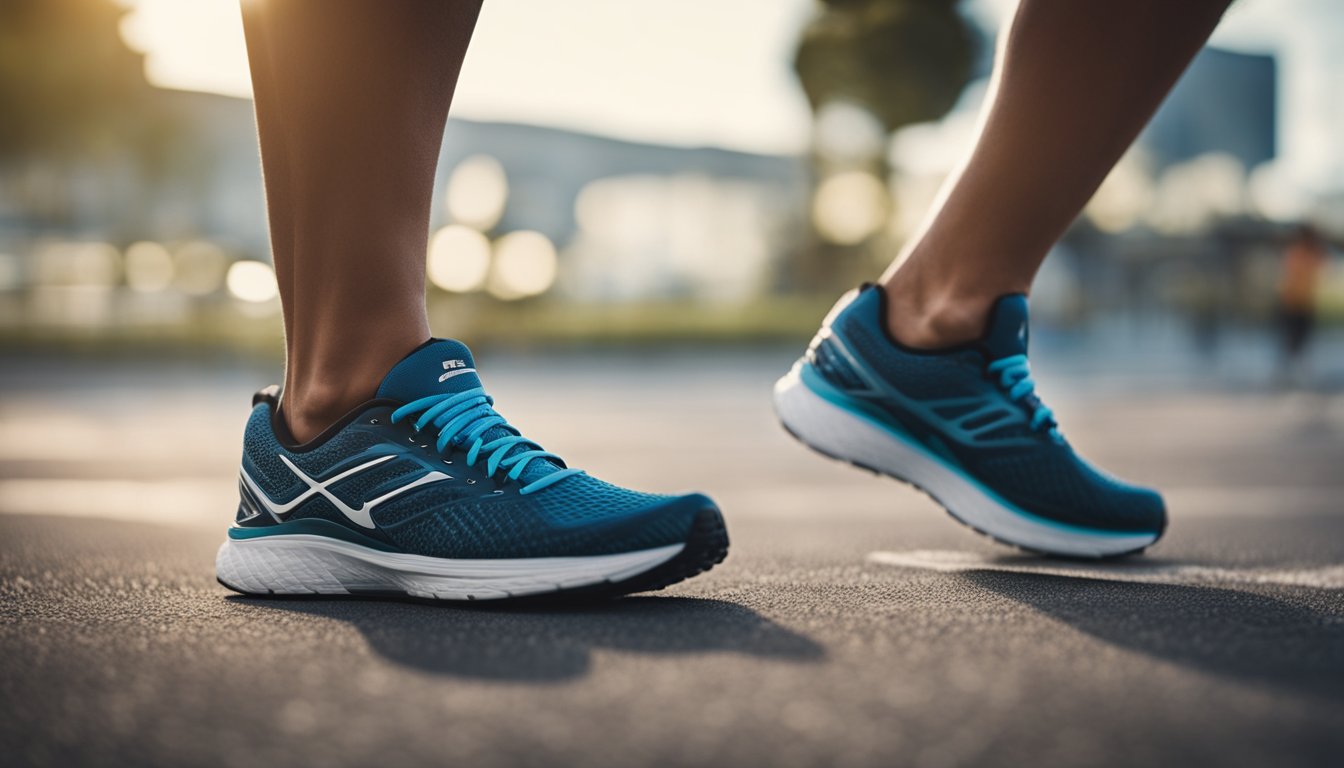
When selecting running shoes, the design is crucial for preventing discomfort along the sides of your ankles. A shoe that doesn’t fit well can create friction that leads to blisters. Your unique foot shape plays a part in this; for example, if your ankles protrude, certain shoe designs might rub against them.
Given the variety of foot shapes, it’s essential to look for a shoe with a design that accommodates yours. Shoes with ample room around the ankles and a soft, padded collar can prevent excessive rubbing. A proper design helps keep your skin safe from irritation and the formation of calluses or corns.
To keep moisture and sweat at bay, which often contribute to skin irritation, opt for shoes made with breathable materials. Some runners find that applying talcum powder inside the shoe reduces moisture. Others use Leukotape strategically placed to create a barrier between the shoe and their skin.
Be mindful of the insole design as well; it should support your foot without causing your ankles to press against the sides of the shoes. Taking care of your toenails by keeping them trimmed can also prevent additional pressure and friction inside the shoe.
| Quick Tips for Shoe Design Related to Ankle Rubbing |
|---|
| Look for padded collar designs |
| Choose breathable materials |
| Consider insoles that match your foot’s arc |
| Use barriers like Leukotape or talcum powder |
When trying on running shoes, make sure there’s no immediate rubbing against your ankles, as this is unlikely to improve with wear.
Choosing the right shoe design from the start can save you from common foot problems associated with shoe rubbing.
Foot Shape (such as a prominent heel bone)
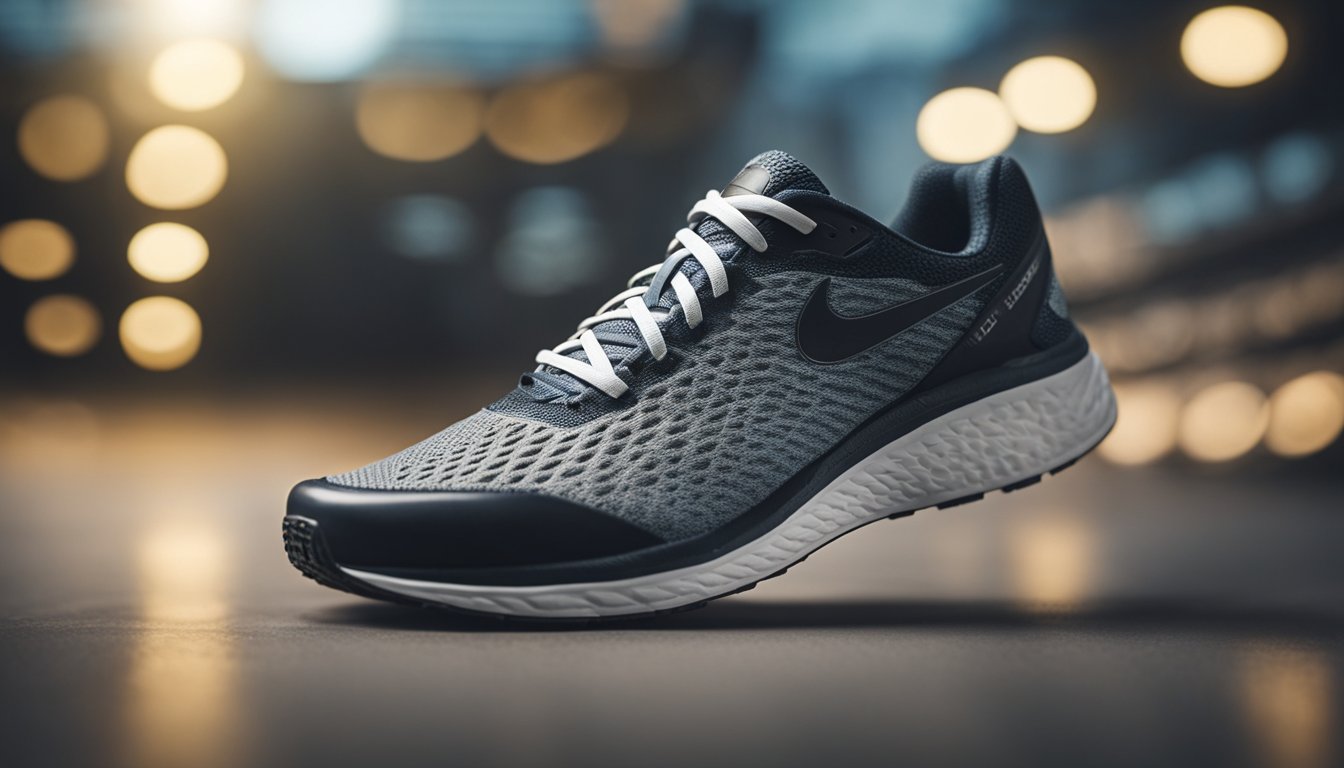
If you have a prominent heel bone, you might find that your running shoes rub the side of your ankle, creating discomfort. This specific foot shape can lead to increased friction between your shoes and where the heel bone sticks out.
This friction can result in painful blisters, as the skin in this area is subject to repeated rubbing.
Preventing Blisters and Pain:
- Keep your toenails trimmed: Long toenails can cause your foot to push forward in the shoe, increasing the pressure on the heel.
- Moisture management: Sweat can soften the skin, making it more vulnerable to rubbing. Using talcum powder can help to absorb excess moisture.
- Barrier methods: A piece of Leukotape over the heel bone can provide a smooth surface, reducing friction.
Choosing the Right Shoes:
- Footwear choice: Pick shoes that accommodate your heel’s shape. Shoes with a softer, padded collar at the back are often recommended.
- Shoe size: Ensure there’s enough room to wiggle your toes to avoid pushing your foot back against the shoe.
Common Foot Problems:
- Corns and calluses: These can form due to excessive pressure and may need treatment if they cause pain.
Remember, if you’re experiencing recurrent problems, it could be worth visiting a foot specialist to discuss orthotics or specific shoes that will better suit your foot’s anatomy.
Excessive Supination or Pronation
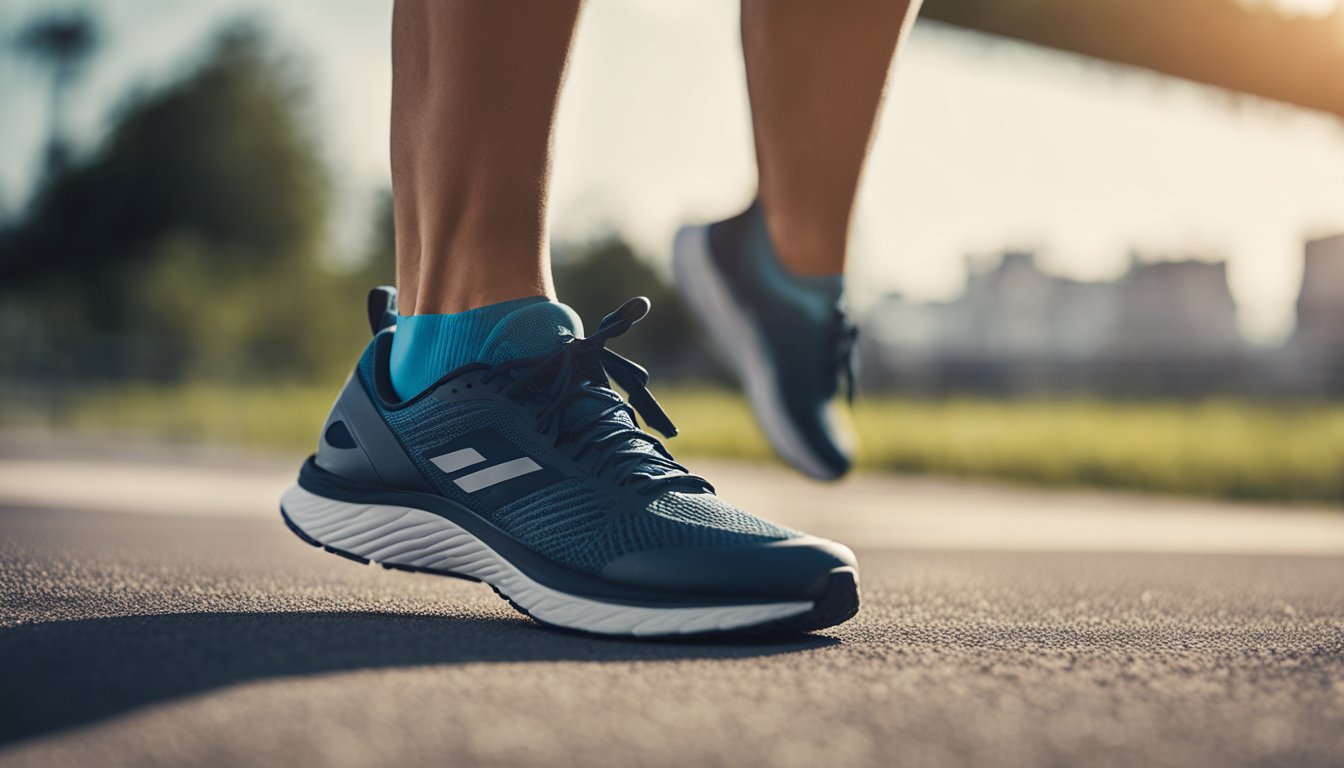
When you run, the way your foot rolls inward or outward can affect your ankles. Excessive supination, or underpronation, means your foot leans to the outside edge. This can cause a less effective shock absorption, leading to more friction on the outer side of your shoe.
On the flip side, excessive pronation means your foot rolls too much inward. Both extremes can create uneven wear on your running shoes and may result in painful blisters or calluses on your ankles due to increased rubbing.
Managing Moisture and Friction:
- Keep your feet dry to reduce moisture and sweat that can soften the skin and increase rubbing.
- Sprinkle talcum powder in your shoes before a run to absorb sweat and reduce friction.
When your shoes don’t align with your foot’s roll, you might feel the sides of your running shoes irritating your skin. This could lead to blisters. In some cases, you might develop corns or calluses on your feet. It’s essential to keep your toenails trimmed to avoid additional pressure points that might worsen the shoe rubbing.
Quick Fixes:
- Cover hotspots with Leukotape temporarily to reduce direct shoe contact.
- Ensure proper shoe fit; shoes that are too tight or too loose can aggravate the problem.
Remember, your feet should not have to suffer. Taking care of your foot health is critical for a comfortable run, and managing pronation issues plays a big part in this.
Worn-out Shoes
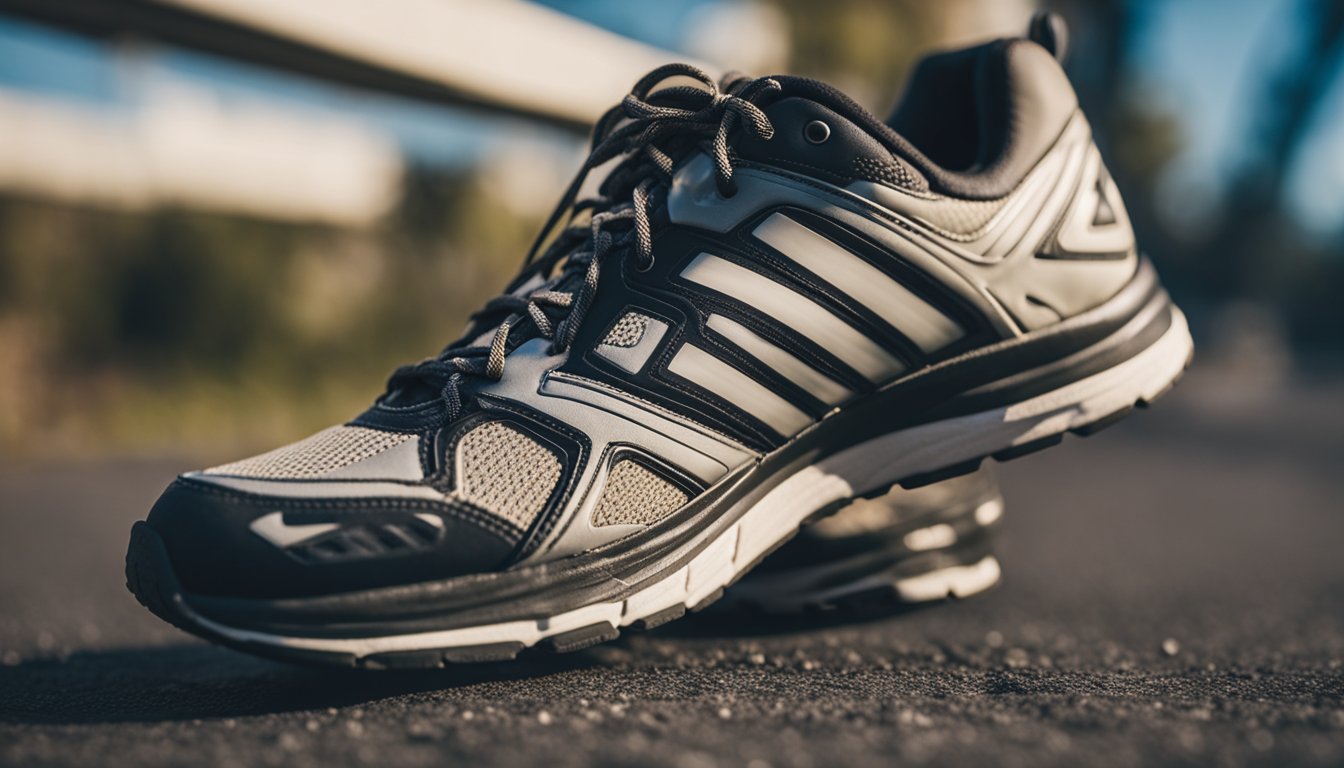
When your running shoes are past their prime, the fit and structure can deteriorate, leading directly to increased friction against your ankles. This breakdown of the interior lining and outer soles can mean that areas once smooth now have seams or ridges that irritate your skin.
Wear and tear on shoes is not just about aesthetics; it can cause physical discomfort. Pain in the ankles, the development of blisters, corns, and calluses, or aggravation of common foot problems are more likely when your footwear fails to provide proper support and protection.
Here’s what to look for:
| Sign | Likely Result |
|---|---|
| Uneven sole wear | Uneven ground impact |
| Thinning midsoles | Reduced cushioning |
| Inner lining tears | Direct abrasion against skin |
To combat moisture and sweat build-up that might exacerbate shoe rubbing, simple solutions like applying talcum powder to your feet before a run, or using Leukotape over areas prone to blistering can provide temporary relief. However, it’s no substitute for replacing your shoes.
It’s also essential to keep your toenails trimmed to prevent them from pushing against the front of the shoe, which can create extra pressure and contribute to wear.
Remember, once the signs of wear appear, it’s time to start shopping for a new pair to protect your ankles from the avoidable friction and accompanying discomfort that worn-out shoes can cause.
Wrong or Old Socks
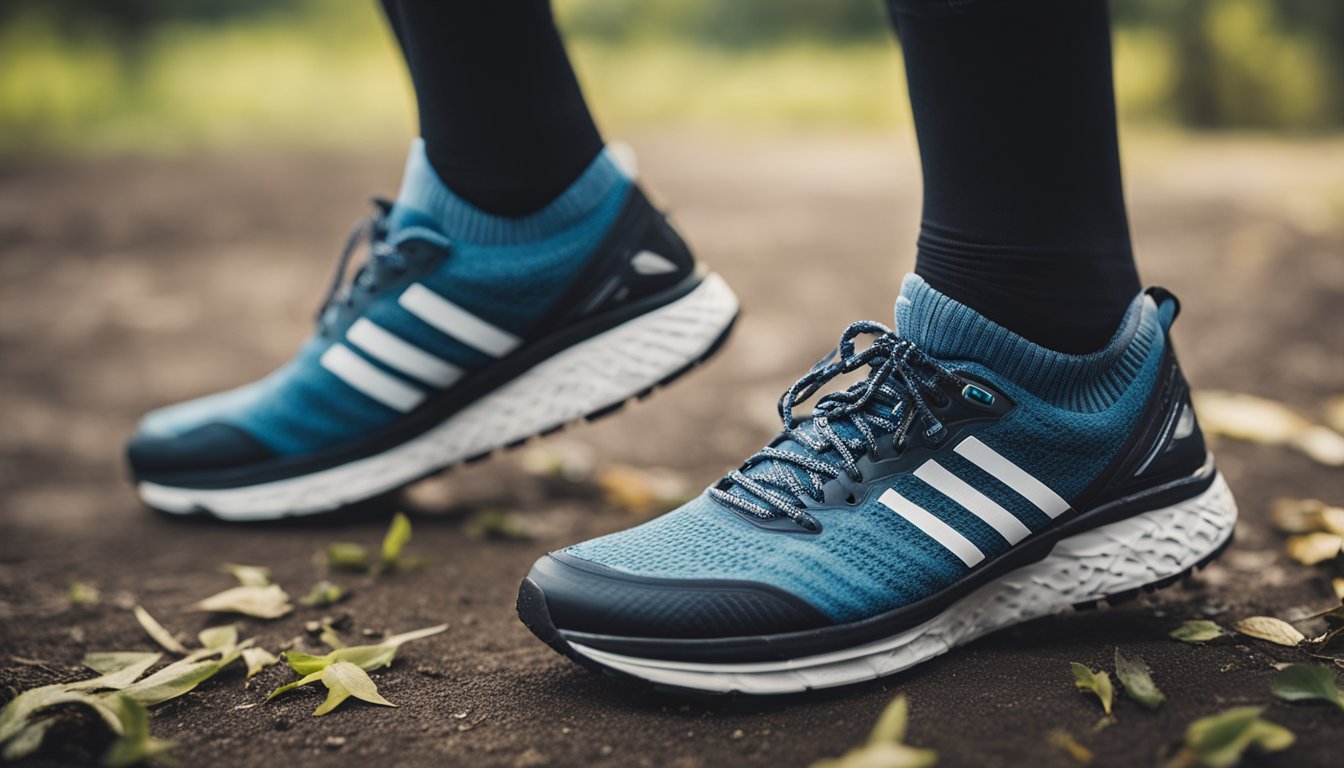
When you run, the right socks are as critical as the shoes you wear. Using the wrong socks or old, worn-out ones can lead to friction against your ankles, causing pain and blisters. Moisture-wicking socks are essential to keep your feet dry and reduce sweat build-up, which is a common cause of shoe rubbing.
- Materials Matter: Opt for socks made from blends of cotton or synthetic fibers that excel at moisture management.
- Thickness Counts: A thicker sock provides a cushion between your skin and shoe, which can prevent blisters and discomfort. However, too thick could alter the fit of your shoe.
Old socks may have lost their elasticity and no longer provide a snug fit, leading to slippage and increased friction. It’s important to replace your running socks regularly to maintain proper foot health and comfort.
| Sock Type | Purpose |
|---|---|
| Thick/Cushioned | Provides cushion, good for longer runs |
| Double Layer | Adds protection, minimizes friction |
| Moisture-Wicking | Keeps feet dry, reduces blisters |
Remember, the wrong sock can be just as detrimental as the wrong shoe. It might seem like a small detail, but it can be the difference between a comfortable run and one marred by foot problems.
Keep an eye on the condition of your socks and choose the right type for your run.
Wrong Lacing Technique
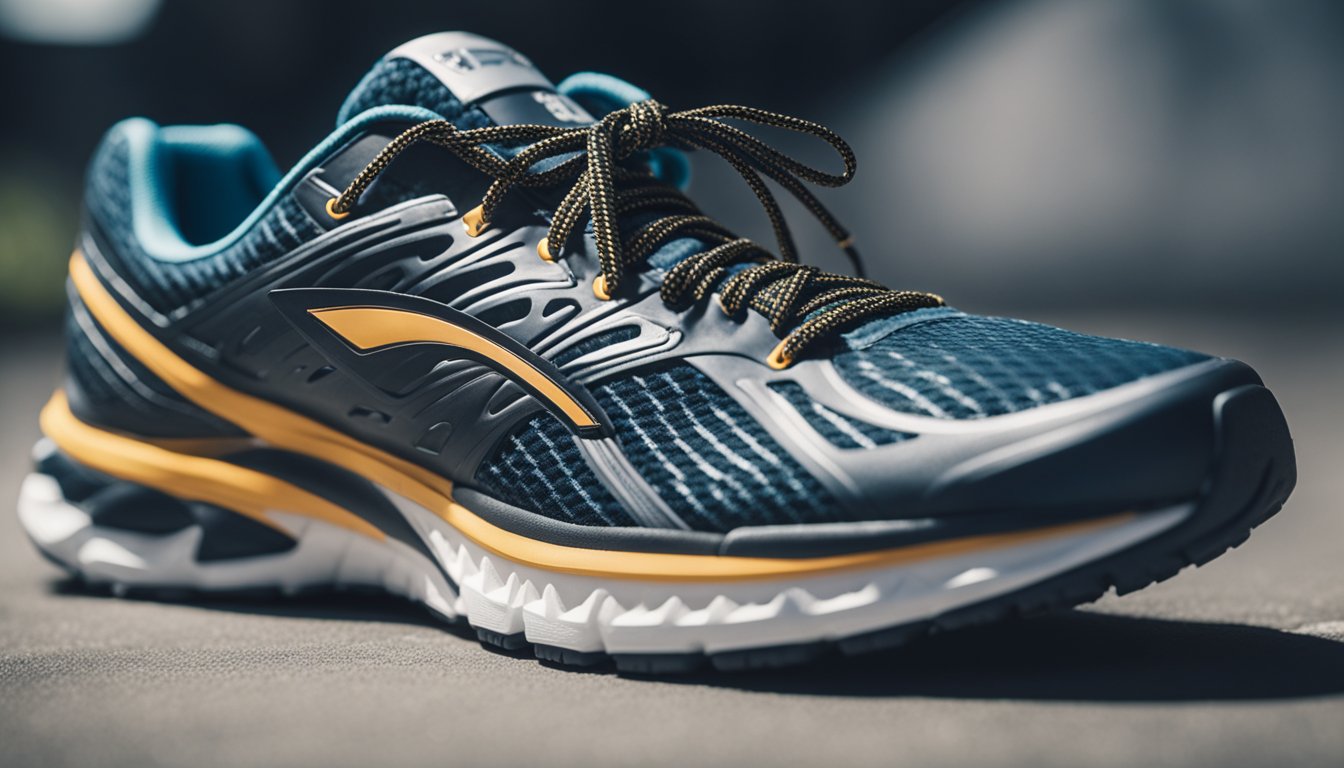
Lacing up your running shoes may seem straightforward, but the way you tie your laces can actually have a big impact on your comfort during a run. An incorrect lacing technique can lead to unwanted friction against your ankles, creating a risk for blisters and irritation of the skin.
If your shoes are rubbing the side of your ankle, it’s possible that your laces are either too tight or not providing enough support, causing your foot to slide around inside the shoe.
When lacing your shoes:
- Make sure the pressure is even across the top of your foot to avoid concentrated areas that can lead to corns or calluses.
- Adjust the laces to alleviate pressure points; if one area is tighter than the others, it may cause your shoe to rub against your ankle.
Tips for Lacing:
- Cross-lacing: This common method might create too much pressure on the sides of the ankles. Experiment with skipping an eyelet to reduce this.
- Parallel lacing: Instead of crossing over, the laces run parallel to reduce side pressure.
- Loosen at the top: If the top of the shoes is laced too tightly, loosening them a bit can decrease pressure on the ankles.
Keeping your toenails trimmed and using moisture-absorbing materials like talcum powder can mitigate sweat, which often increases the friction between your shoe and ankle. For immediate relief, some runners use a small piece of Leukotape over sensitive spots as a temporary barrier to protect the skin.
Remember, the goal is to lace your shoes firmly enough to prevent excessive movement without cutting into your skin or causing pain.
Ankle Mobility and Gait
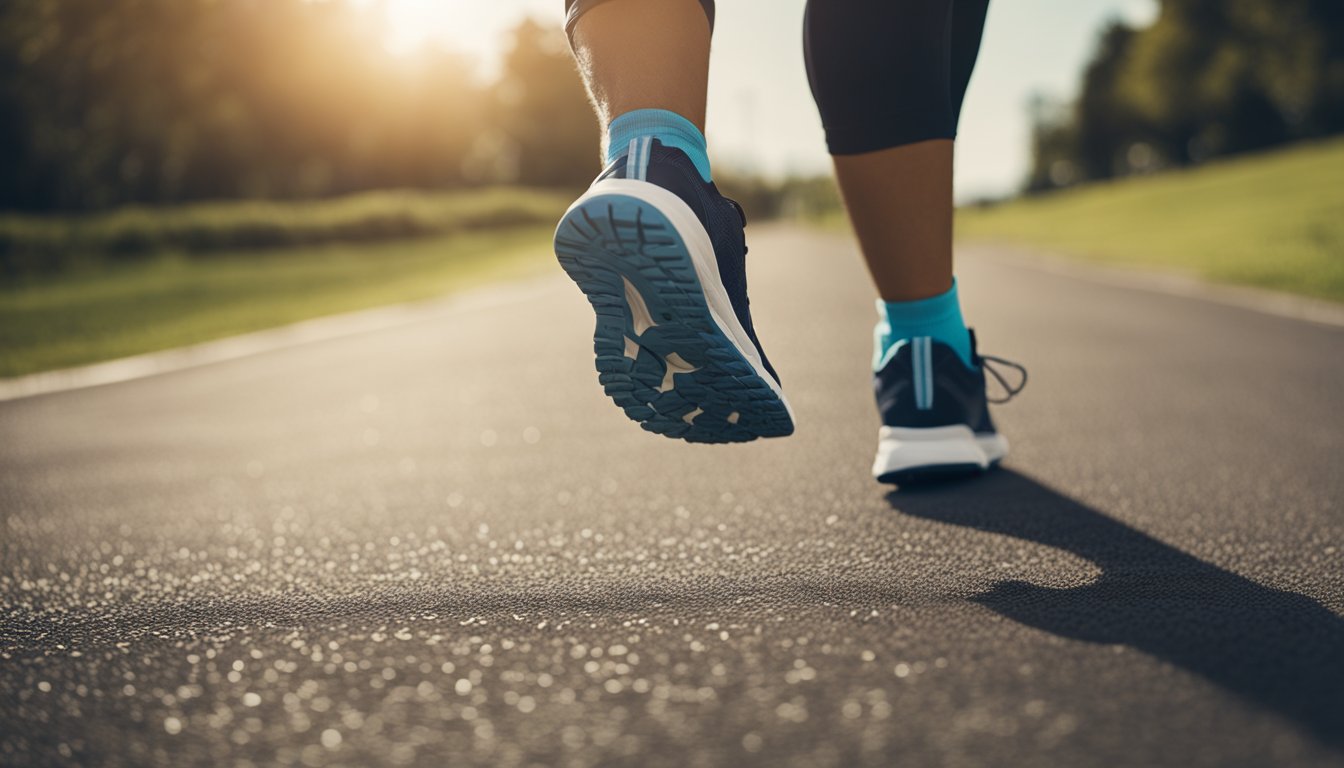
When you run, proper ankle mobility ensures that your feet can flex and extend optimally. If your ankles aren’t moving freely, you might unconsciously alter your gait, leading to friction and skin irritation on the sides of your ankles.
Maintaining ankle mobility also helps in preventing common foot problems like corns and calluses, which occur from repetitive pressure points. While running, your feet experience a mix of moisture and sweat, which can soften the skin and increase the chances of shoe rubbing issues.
Solutions to Prevent Shoe Rubbing:
- Moisture Management: Keep your feet dry. Apply talcum powder before putting on socks to absorb excess moisture.
- Protective Barriers: Use Leukotape or specialized padding on areas prone to rubbing.
- Proper Toenail Care: Keep your toenails trimmed to avoid undue pressure and skin damage in your shoes.
Maintain Ankle Health:
- Stretching: Regular ankle exercises can improve flexibility.
- Strength Training: Strengthening the muscles around your ankles can reduce strain.
- Footwear: Ensure your running shoes provide adequate support and fit well.
By keeping your ankles mobile and adopting these habits, you can minimize the risk of running shoes rubbing the side of your ankle. Remember, your comfort during runs is pivotal to your performance and enjoyment.
Excessive Wear on One Side of the Heel
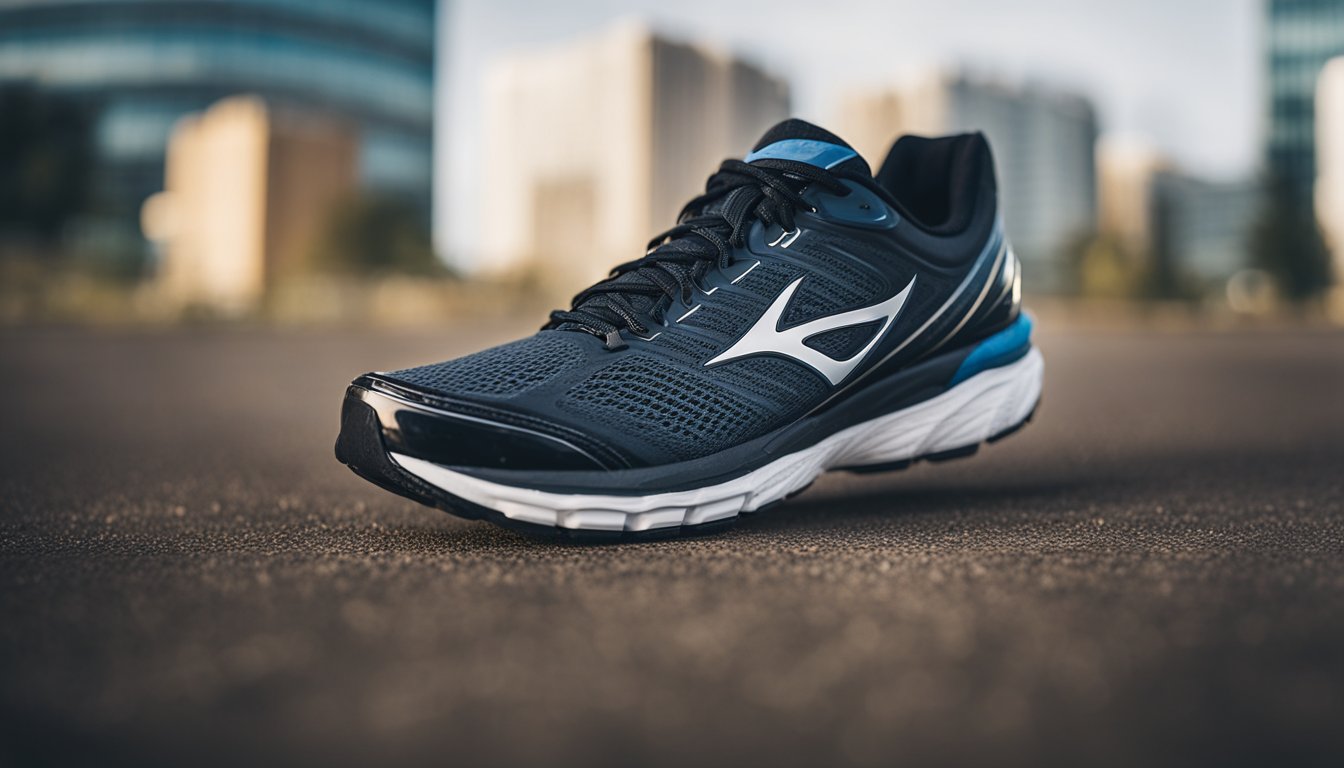
When running shoes rub the side of your ankle, it could indicate excessive wear on one side of the heel. This wear pattern can create several issues for your feet, leading to discomfort and even injury.
Why It Happens: Uneven heel wear typically arises from an imbalanced gait, where you might roll your feet inward (overpronation) or outward (supination) as you run. This imbalance puts more pressure on one side of your footwear.
Problems You Might Encounter:
- Pain and Friction: Unusual wear can cause the shoe to fit improperly, leading to increased friction and pain around the ankles.
- Blisters and Skin Damage: Persistent rubbing against the ankle can result in blisters or wear down the skin, making sensitive areas prone to injury.
- Common Foot Problems: If not addressed, this can lead to or exacerbate common issues like corns, calluses, and problems with toenails.
Managing Shoe Rubbing: To manage the rubbing and protect your skin, consider the following tips:
| Solutions | How They Help |
|---|---|
| Moisture-wicking socks | Reduce sweat and moisture, lowering friction |
| Talcum powder | Absorbs moisture to minimize rubbing |
| Leukotape | Creates a smooth barrier to prevent abrasion |
| Properly fitting shoes | Ensures even distribution of pressure |
By addressing the wear pattern on your shoes, you can reduce the risk of ankle rub and maintain a comfortable, safe running experience. Remember to check your shoes regularly for uneven heel wear and take steps to mitigate any potential issues.
If pain persists, consult a specialist for advice on gait analysis and corrective footwear.
Manufacturing Defects
When your running shoes rub against the side of your ankle, it could be due to manufacturing defects. Imperfect sizing can cause a mismatch in the symmetry of the shoe, leading to friction against your ankles. This continuous rubbing might result in pain, blisters, or aggravate common foot problems.
Shoes that have misaligned components or excess glue can create pressure points. In addition, sharp points or materials inside the shoe from a manufacturing error can cause direct harm, puncturing the skin or damaging your toenails.
| Defect | Potential Result |
|---|---|
| Imperfect sizing | Increased friction and blisters |
| Excess glue | Corns and calluses |
| Sharp materials | Cuts and harm to skin or nails |
Materials that don’t manage moisture well or trap sweat might not only be uncomfortable but can exacerbate the rubbing, especially around the ankles. A shoe that doesn’t fit properly can slip and slide, causing skin irritation.
To combat these issues, you might try solutions like duct tape to cover sharp edges or talcum powder to reduce moisture. However, these are temporary fixes. If your running shoes are causing discomfort due to manufacturing defects, consider seeking a better-fitted pair designed with runners’ needs in mind.
Temperature and Swelling
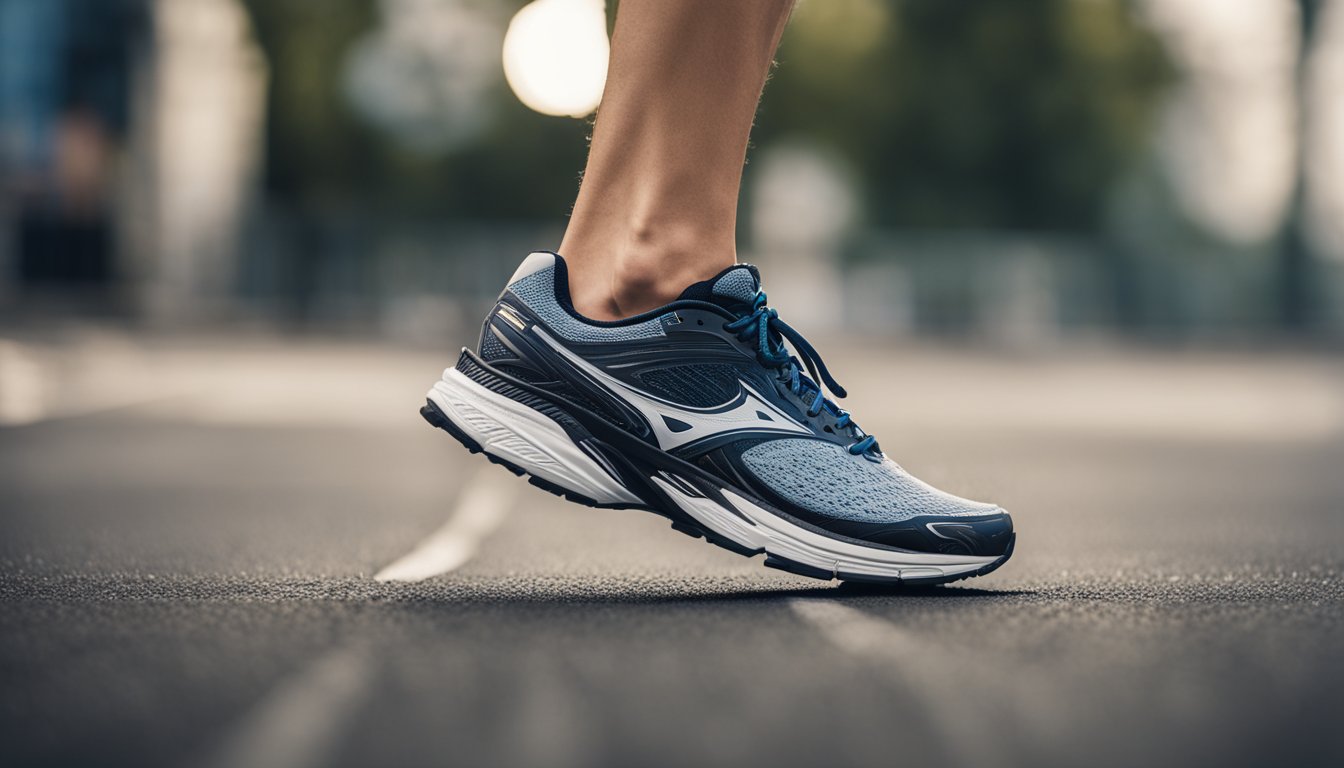
When running, your feet naturally generate heat due to the continuous impact and exertion. This increase in temperature can cause your feet to swell.
Swollen ankles and feet can alter the fit of your shoes, increasing the chance of shoe rubbing and the associated pain.
Heat and Moisture Management
- Sweat: Your feet sweat, adding moisture and causing friction inside your shoes, which can lead to blisters.
- Cooler Conditions: Running in cooler temperatures may reduce swelling.
To prevent shoe rubbing:
- Choose breathable shoes to help reduce heat buildup.
- Wear moisture-wicking socks to keep skin dry and prevent sweat accumulation.
- Air out your shoes post-run to release moisture and heat.
Preventing Skin Issues
- Talcum Powder: Apply to your feet to absorb sweat and minimize moisture.
- Duct Tape: Some runners place this over hotspots on feet to protect against friction.
- Proper Nail Care: Keep toenails trimmed to avoid added pressure and rubbing.
Regularly check your feet for early signs of common foot problems such as corns, calluses, or skin irritation. Tracking when swelling and pain occur can help you make adjustments for more comfortable runs.

